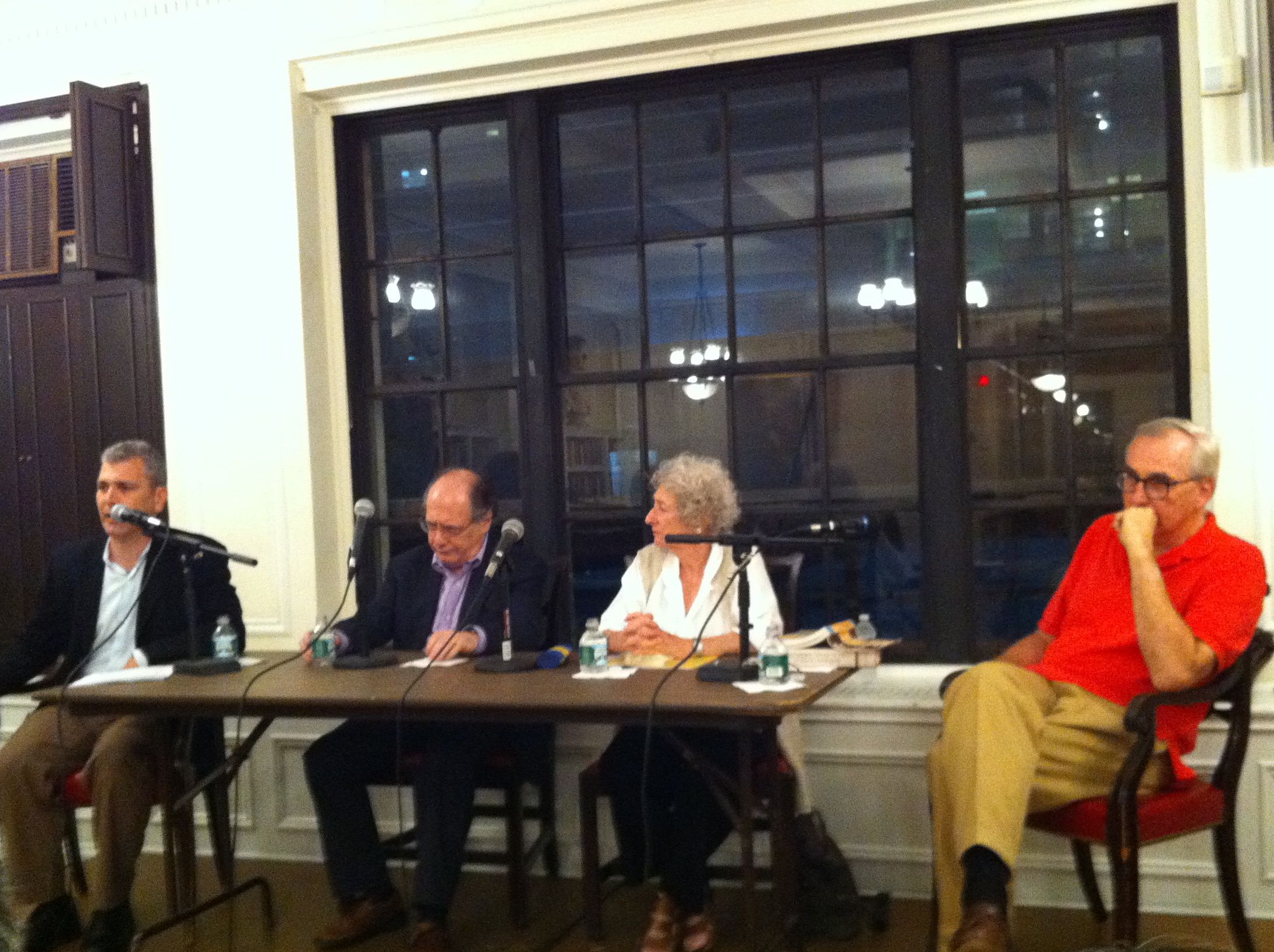 Last night's NBCC Reads “Conjugal Lit” discussion at the Center for Fiction on E. 47th Street started a bit late (UN traffic outside) and ended with an unexpected cloudburst, keeping New York City in the midwest weather twilight zone after tornados last week devastated neighborhoods in Brooklyn and Queens.
Last night's NBCC Reads “Conjugal Lit” discussion at the Center for Fiction on E. 47th Street started a bit late (UN traffic outside) and ended with an unexpected cloudburst, keeping New York City in the midwest weather twilight zone after tornados last week devastated neighborhoods in Brooklyn and Queens.
Moderator James Marcus, the NBCC Reads wrangler for a couple of years now (he's just stepping down), kept the introductions and questions flowing among his panelists, Gary Giddins, Lore Segal and Stephen Koch (Brenda Wineapple withdrew due to illness in the family; word was she was going to speak about Ahab and Moby Dick).
Gary Giddins picked Penolope and Odysseus as his conjugal couple (the ultimate example of “coitus delayed,” he said). They had virtually equal status—“both powerful, both tricksters.” Disguised by Athena, Odysseus returns to his wife after 20 years of “getting laid all over the Mediterranean” to find “108 suitors living in her courtyard, klling goats and drinking her wine.” After setting up a match and dispatching the suitors, Odysseus reveals himself; Penelope refuses to acknowledge he is her husband until she tests him with her own challenge. Both Odysseus and Penelope are clever, self possessed, with heroic endurance. Homer's couple was one of the few matches of equals in the night's discussion.
Lore Segal took on some of Jane Austen's unequal couples, beginning with Mr. and Mrs. Bennett. “The business of her life was to get her daughters married,” she said. “She got pleasure from her house and children. Mr Bennett found pleasure in his reading. He's amused at her, and sarcastic.” Their daughter Elizabeth Bennett experiences the “agony of embarrassment” in their presence. Segal dubbed her experience the “Elizabeth Bennett complex,” excruciating embarrassment at watching other people, our families, our president, do foolish things.” Austen considers being “sensible, cheerful, amiable” admirable characteristics, she added. Not something we see in literature today.
Stephen Koch selected Ernest Hemingway's short story “The Snows of Kilamanjaro” as his focal point for a discussion of Hemingway's own inherited depresson (he, his father, brother, one sister, granddaughter and others in the family died of suicide as a result of the illness) and his tendency to ward off his demons by beginning a new relationship with a woman, which led him to love triangles throughout his life. “If you substitute the words 'acute life threatening suicidal depression' for the word 'gangrene' in the story, his own life situation snaps into place.”
As conversation flowed, more conjugal relationships came to the fore: Emma Bovary, Anna Karenina, Mr. and Mrs. Bridge, the couple in Jane Gardam's “Old Filth” and “The Man in the Wooden Hat,” D. H. Lawrence and Frieda as represented by Aldous Huxley, the list goes on. Your favorites?


